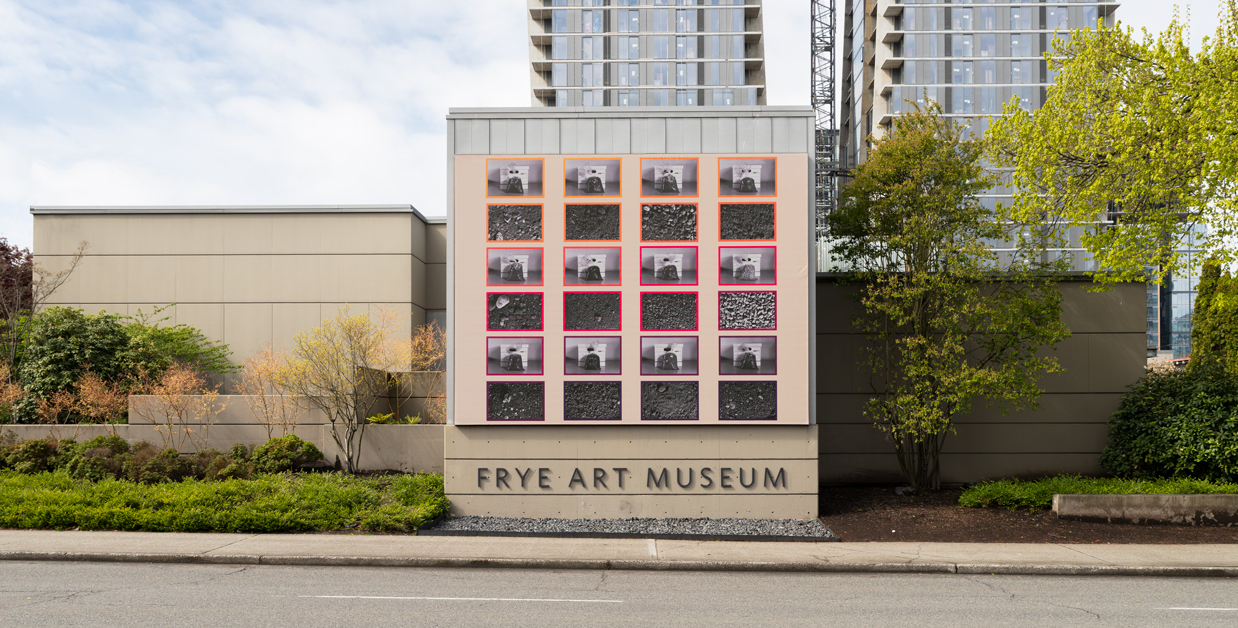Interested in collecting, saving, or documenting family memories for future generations? Seattle-based artist Stefan Gonzales uses archiving as part of their artistic process. For the current iteration of the Frye’s Boren Banner Series, Gonzales worked on an image that represents the culmination of a monthslong process of collecting and documenting raw materials from area construction sites. The image is a compilation of photographs that functions as a provisional archive—a small, subjective core sample of the enormous quantity of earth that is currently shifting within our community.
After learning more about the artist’s process, we hope you may be inspired to start your own family archive.

Stefan Gonzales. Archive ID #420”, 2020. Digital film stills. 17 x 22 in. Courtesy of the artist. Installation view from Boren Banner Series: Stefan Gonzales, Frye Art Museum, April 23 – October 16, 2022. Photo: Jueqian Fang
WHAT TO SAVE
Are there certain family items that you are unsure of keeping? Here are some questions to consider:
- Is it something that can be scanned or photographed so that you keep a digital version of it?
- Is it important to you and/or your family that you have the physical item?
HOW TO SAVE ITEMS
If you have items that you want save as digital files, here are some tips:
- Plan on scanning flat items or photographing three-dimensional items.
- Invest in a high-quality scanner to ensure better quality files.
STORAGE
The most important part to consider is storage. Physical storage is complicated and not everyone has the space available for it. Digital storage is a more accessible option. Here are some ideas for digital archiving:
- A great tool for digital archiving is a proper external hard drive (featuring a SSD, or solid state drive). These specific drives are preferred because they contain no moving parts, ensuring your archive is safer. If you have the means, it is recommended to have multiple drives for backups. (Tip: Do not store digital files on your personal devices such as computers, tablets, or phones.)
- If you have physical hard drives with multiple backups, try storing the copies at various locations to avoid loss caused by natural disasters or other unforeseen circumstances.
- Cloud storage is an easy and accessible option. Google offers free limited storage that can be accessed on any computer or device with internet access. Keep in mind that cloud services come with their own practical and philosophical risk due to the possibility of losing your data because you are not fully in control of the software.